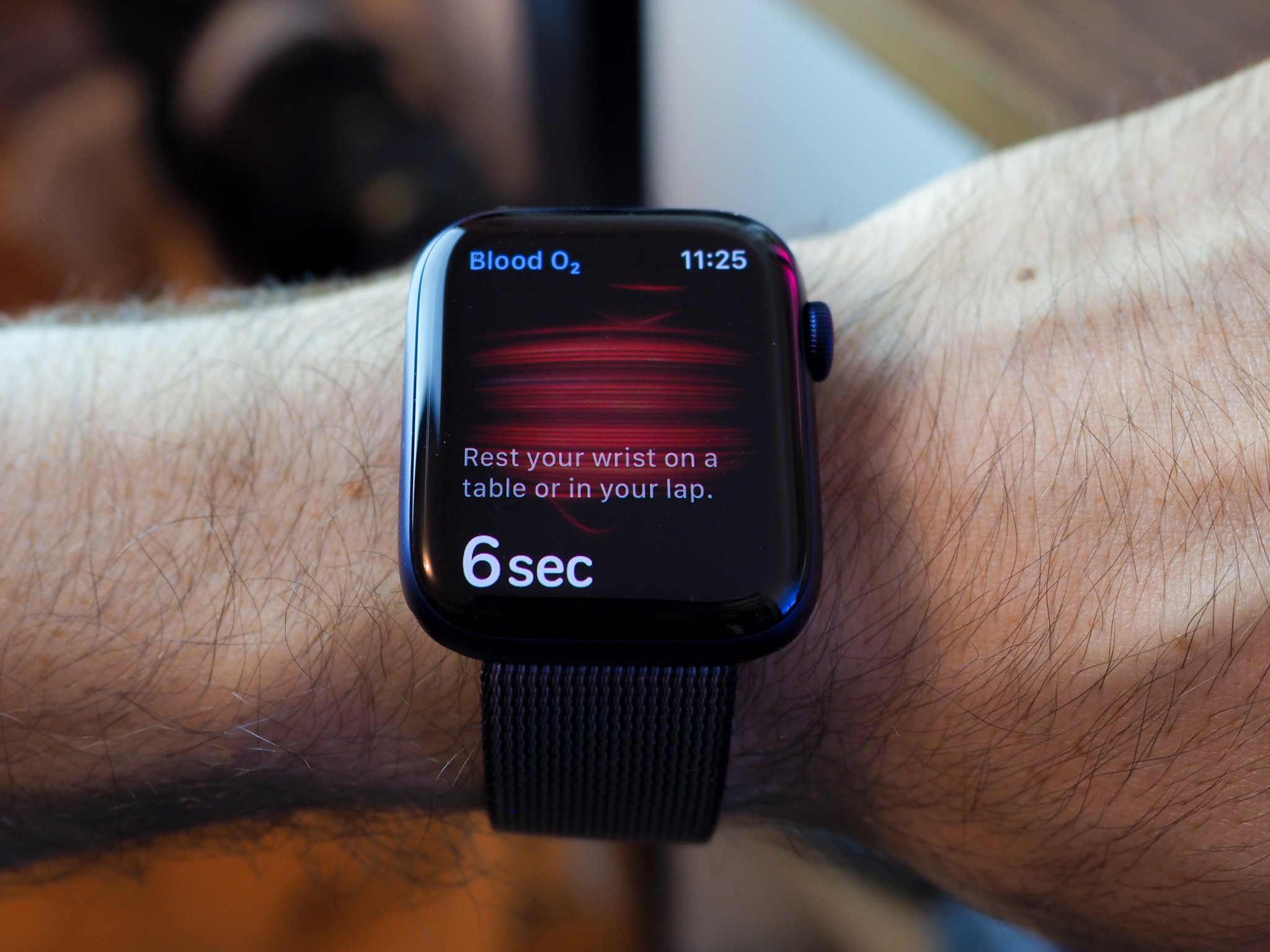Apple Watch Series 6's blood oxygen sensor didn't get FDA approval because it isn't medical-grade

What you need to know
- Apple Watch Series 6 has a blood oxygen sensor built in.
- But that sensor hasn't been approved by the FDA.
- It didn't need to be, either.
Apple's recently-released Apple Watch Series 6 is the best Apple Watch yet. Part of the reason for that is the inclusion of a blood oxygen sensor for the first time. But unlike Apple Watch's ECG functionality, that blood oxygen sensor hasn't been anywhere near the FDA. It hasn't been given the seal of approval. And the reason is exactly what we thought it was.
It didn't need it.
The Verge has a new report out today that explains why the blood oxygen sensor isn't approved. The tl;dr version is simple – the sensor isn't designed to be accurate enough to be classed as medical-grade. Instead, Apple says it's only to be used for wellness purposes. It's a loophole of sorts, but it also explains why there have been times where reviewers have had wildly different results.
It just isn't that that fancy. At least not compared to FDA-approved sensors, that is.
They're not saying that their monitor can diagnose any disease, just that it's offering up the information. Other health-focused apps and smartwatches have taken the same approach, sidestepping the FDA process. "If you're just providing information, they're not regulating that," says Matt Grennan, assistant professor of health care management in the Wharton School at the University of Pennsylvania. Digital health products are so ubiquitous, and so many new ones enter the market every year, that it'd be hard for the FDA to review all of them. "They have to think about how they can allocate their own resources," Grennan says.
That all changes if you claim your blood oxygen sensor is capable of detecting illness – something Apple has taken great pains to avoid doing. From Apple's own Newsroom post.
Apple today announced Apple Watch Series 6, introducing a revolutionary Blood Oxygen feature that offers users even more insight into their overall wellness.
And again.
Apple Watch Series 6 expands the health capabilities of previous Apple Watch models with a new feature that conveniently measures the oxygen saturation of the user's blood, so they can better understand their overall fitness and wellness. Oxygen saturation, or SpO2, represents the percentage of oxygen being carried by red blood cells from the lungs to the rest of the body, and indicates how well this oxygenated blood is being delivered throughout the body.
Finally.
Master your iPhone in minutes
iMore offers spot-on advice and guidance from our team of experts, with decades of Apple device experience to lean on. Learn more with iMore!
Blood Oxygen app measurements are not intended for medical use, including self-diagnosis or consultation with a doctor, and are only designed for general fitness and wellness purposes.
I thought this was something we all knew and understood. Maybe not!
The bottom line is this – anyone wanting to know precisely what their blood oxygen levels are because of a specific illness they suffer from should get a "real" sensor. Everyone else that just has a passing curiosity? Apple Watch Series 6 is probably fine for your needs.

Oliver Haslam has written about Apple and the wider technology business for more than a decade with bylines on How-To Geek, PC Mag, iDownloadBlog, and many more. He has also been published in print for Macworld, including cover stories. At iMore, Oliver is involved in daily news coverage and, not being short of opinions, has been known to 'explain' those thoughts in more detail, too. Having grown up using PCs and spending far too much money on graphics card and flashy RAM, Oliver switched to the Mac with a G5 iMac and hasn't looked back. Since then he's seen the growth of the smartphone world, backed by iPhone, and new product categories come and go. Current expertise includes iOS, macOS, streaming services, and pretty much anything that has a battery or plugs into a wall. Oliver also covers mobile gaming for iMore, with Apple Arcade a particular focus. He's been gaming since the Atari 2600 days and still struggles to comprehend the fact he can play console quality titles on his pocket computer.
